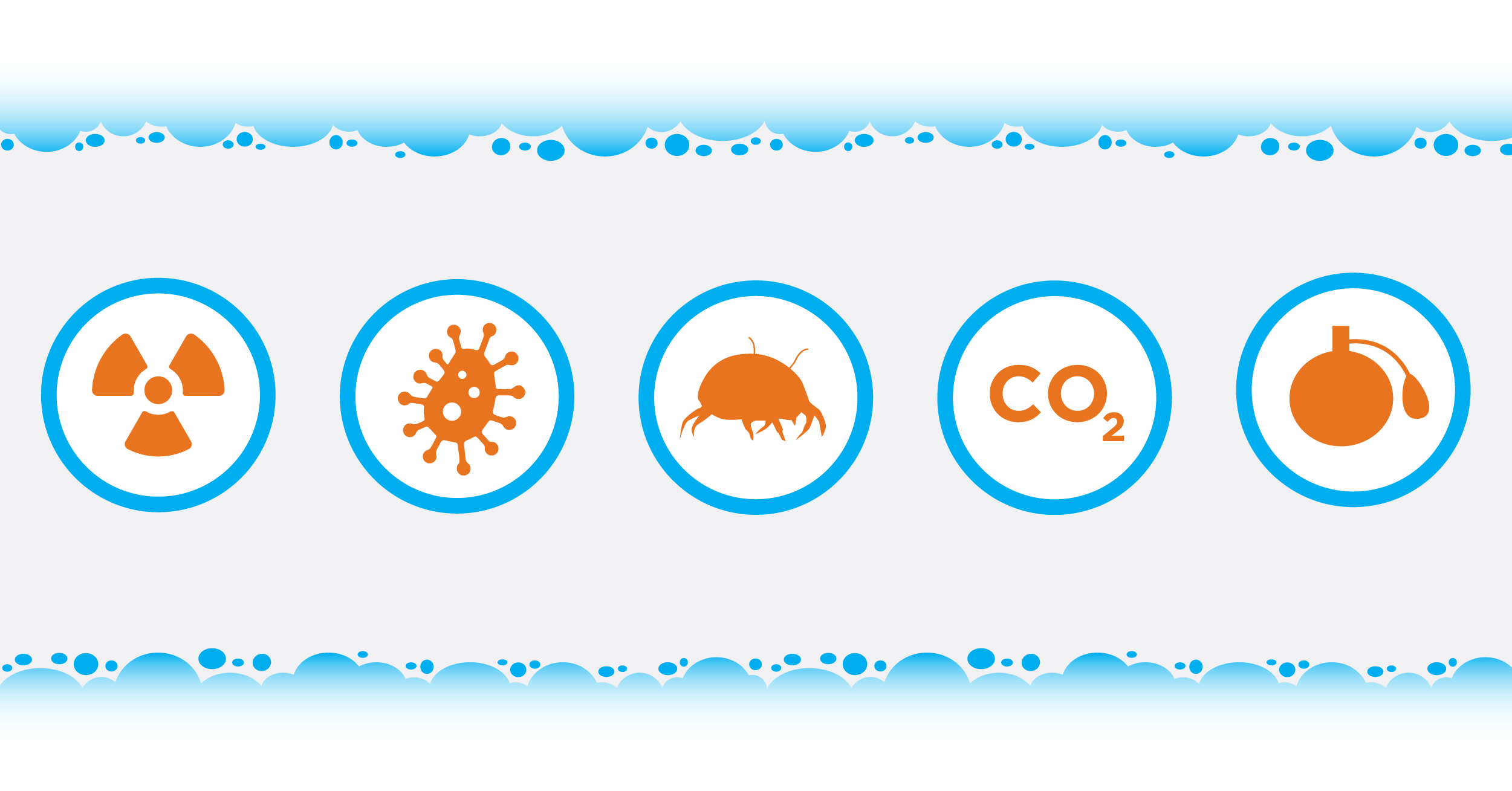
Indoor air is more polluted on average than outdoor air. But while many people think of car exhaust pipes or factory chimneys when they think about air pollution, neither of those are in our homes. So what are the different kinds of indoor air pollution, where do they come from, and how harmful are they?
(View as a downloadable PDF version)
Excessive humidity inside a home can not only be uncomfortable and cause structural damage, but can also lead to mold growth.
Health Risks: Asthma and allergies
What To Do: Humidity levels can be controlled with whole home dehumidifiers, UV lights, and enhanced filtration and ventilation, plus upgrading your insulation and air sealing will help keep humid outdoor air out.
Biological contaminants like dog and cat dander, pollen from trees and grass, dust mites, and even viruses and bacteria are all common to find inside homes.
Health Risks: Allergies, asthma, illness
What To Do: Changing your air filter on a regular basis, upgrading your air filtration with higher MERV or HEPA rated filters, proper ventilation, installing UV lights or an air purifier, and regular cleaning of your home can control biological contaminant levels.
Carbon monoxide is an odorless gas created by gas or oil-burning furnaces, boilers, and water heaters, wood stoves, gas stoves, and more.
Health Risks: Illness and sudden death—400 Americans a year are killed from accidental CO poisoning.
What To Do: Regular maintenance visits from a qualified HVAC technician can help ensure your HVAC system is properly vented. You should also install a carbon monoxide monitor near any combustible appliance.
Volatile organic compounds, or VOCs, are off-gassed from household cleaners, paints, air fresheners, and even new furniture and building materials.
Health Risks: Irritation of the eyes, nose, and throat; headaches and nausea
What To Do: Take action to reduce the use of VOC sources in your home when possible. You can also increase indoor ventilation, upgrade to HEPA filters, and install a whole home air purification system.